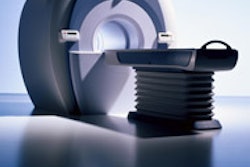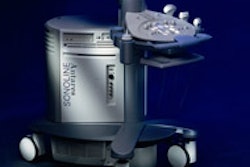Flat lesions are not a significant drawback for virtual colonoscopy, according to researchers from the University of Wisconsin Medical School and the U.S. Department of Defense, who found that sensitivity for flat morphology was comparable to that of pedunculated lesions.
The radiologists behind the exams were already known to have performed them well. The study in November's American Journal of Roentgenology relied on data from a landmark Department of Defense study published last year in the New England Journal of Medicine (NEJM, December 4, 2003, Vol. 349:23, pp. 2191-2200).
Still, the new study confirms that flat lesions 6 mm or larger are rare in a Western screening population, and that properly performed virtual colonoscopy can find them.
"There has been considerable debate among gastroenterologists regarding the prevalence and significance of small, but aggressive flat colorectal adenomas," wrote Drs. Perry Pickhardt, Pamela Nugent, J. Richard Choi, and William R. Schindler in the November AJR.
"Because these lesions may be more easily missed at optical colonoscopy, investigators in Japan developed advanced techniques for optical colonoscopy detection (e.g., chromoscopy with magnification). Other investigators, however, have argued that small flat adenomas with increased malignant potential are rare in Western countries, and do not warrant widespread implementation of such special techniques" (AJR, November 2004, Vol. 183:5, pp. 1343-1347).
That flat lesions may be similarly inconspicuous on VC has been a cause of concern about the exam, they noted. The study aimed to report the frequency and histology of flat lesions in a Western asymptomatic screening population, and assess virtual colonoscopy's ability to detect them.
"The overall virtual colonoscopy performance data for this cohort have been published previously, but an analysis of polyps according to morphology was beyond the scope of that clinical report and has not, to our knowledge, been previously reported," the authors explained.
Examination
Before same-day virtual and optical colonoscopy, the 1,233 subjects (505 women, 728 men, mean age 57.8 years) underwent purgative bowel cleansing with two 45-mL doses of phosphosoda and 10 mg of bisacodyl, along with two 250-mL doses of 2.1% barium contrast as a fecal tagging agent and for electronic fluid subtraction. Patients self-insufflated the colon with room air to tolerance.
CT images were obtained on either a four- or eight-slice multidetector-row scanner using 2.5-mm or 1.25-mm collimation, respectively. Both prone and supine scans were performed using 15 mm/sec table speed, 1-mm reconstruction intervals, 100 mAs, and 120 kVp.
The group used a V3D-Colon workstation (Viatronix, Stony Brook, NY) for primary 3D interpretation, reserving 2D for problem-solving and correlation of positive results. All VC results were correlated by same-day conventional colonoscopy, with segmental unblinding of the VC results after the gastroenterologist examined each colonic segment with a colonoscope. At that point, if VC revealed a finding that had not been seen by the gastroenterologist, the colonoscope was reinserted into the segment for a second look. All resected lesions underwent histologic analysis.
Flat-lesion results
There were 244 polyps 6 mm and larger seen in conventional colonoscopy, of which 17 (4.9%) were considered flat at both examinations. Seventeen (4.9%) lesions were deemed flat at conventional colonoscopy alone (100% of these were "sessile" at VC), and 25 (7.3%) were considered flat at virtual colonoscopy only (100% of these were "sessile" at conventional colonoscopy).
(The study was limited by "the difficulty in enforcing consistent application of the definition for a flat lesion among virtual and optical colonoscopists," which explains why so many flat lesions were reported as "sessile" by the colonoscopist, the authors wrote.)
In all, VC detected 47/59 (80%) flat lesions seen on colonoscopy, compared to 231/285 (81%) nonflat lesions that colonoscopy found in the cohort. Five flat lesions (8.5%) were initially missed at conventional colonoscopy, but found at a second-look examination resulting from positive VC results. None of the flat adenomas was an advanced lesion.
"Virtual colonoscopy prospectively detected 24 (82.8%) of 29 flat adenomas and 47 (80.0%) of all 59 flat lesions 6 mm or greater," the authors wrote. "In comparison, the sensitivity of virtual colonoscopy for the detection of polypoid adenomas and all polypoid lesions of 6 mm or greater was 86.2% (156/181, p = 0.58) and 81.0% (231/285, p = 0.086)." VC missed three nonadenomatous lesions 10 mm and larger, "including two hyperplastic lesions and one 80-mm lesion that revealed only normal colonic mucosa at histology."
Flat lesions 10 mm and larger were found prospectively in just 11/1,233 patients (0.9%), five of which were also seen prospectively in conventional colonoscopy. At colonoscopy the positive predictive value for large flat lesions was 45.4%, compared to 69.2% for polypoid lesions.
Colonoscopy also identified 148/966 (15.3%) flat lesions 5 mm and smaller, none histologically advanced -- as well as 26 flat lesions 6-9 mm, 57.7% of which were nonadenomatous and none histologically advanced.
"The reported frequencies of flat adenomas have varied widely, but most studies, including ours, have found that they account for approximately 10% of all adenomas," Pickhardt and colleagues wrote. "Many investigators have argued that small flat adenomas with high malignant potential are rare in Western countries, and there is little evidence that they are being missed on standard video colonoscopy. Therefore, our enhanced technique of optical colonoscopy with segmental unblinding is likely an adequate reference standard for evaluating flat lesions in our screening population."
Moreover, detection rates differed little between flat and polypoid lesions 6 mm and larger, suggesting that the 3D primary read and the use of 3D translucent rendering may have rendered flat lesions more conspicuous than in other studies.
At any rate, careful interpretation, excellent VC technique and a clean, well-distended colon are required to detect flat lesions accurately. Barium fecal tagging is vital to distinguishing flat lesions from adherent stool, the authors wrote.
Flat adenomas are rare in an asymptomatic Western screening population, and rarely harbor aggressive histologic features, the group concluded.
"This finding is further evidence that small polyps detected at virtual colonoscopy can be safely followed up with virtual colonoscopy surveillance without the need for polypectomy until significant growth, which will occur in only a minority of cases, is encountered," they wrote.
By Eric Barnes
AuntMinnie.com staff writer
November 15, 2004
Related Reading
What virtual colonoscopy misses might not matter, August 18, 2004
Group credits 3-D reading for best-ever VC results, October 15, 2003
Workflow issues key in virtual colonoscopy, January 15, 2003
Virtual colonoscopy aces first flat-lesion study, December 3, 2002
Copyright © 2004 AuntMinnie.com



















